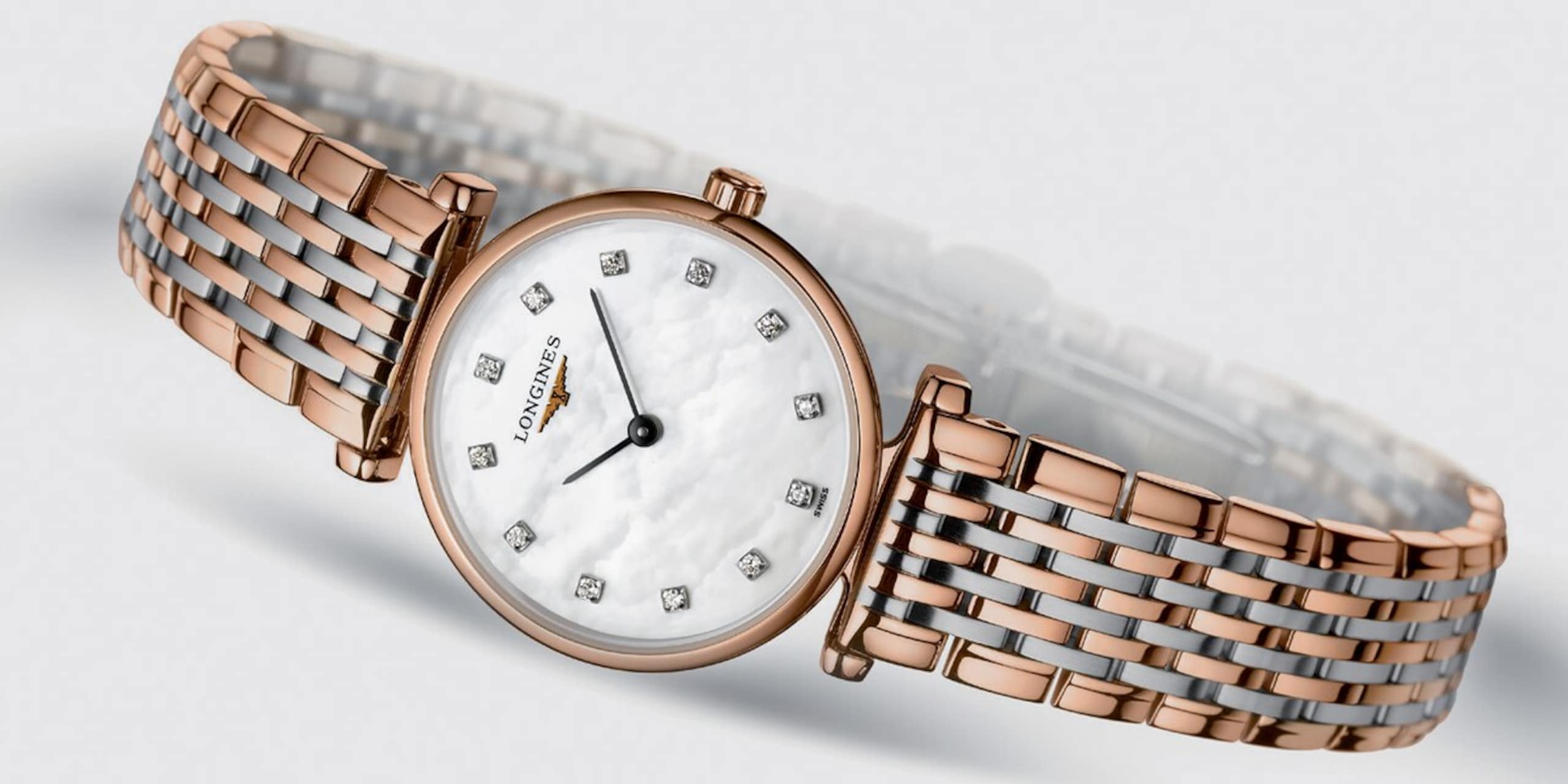
Understanding PVD
In watchmaking, we often hear the term PVD as it pertains to a color or coating, but it helps to understand exactly what PVD is.
The Process
To begin with, the acronym “PVD” stands for Physical Vapor Deposition. The manufacturing process is highly sophisticated and is used to change the color of stainless steel or titanium by coating it with another material. Some brands use PVD coating to achieve bold colors. Watches within Longines’ collections use it to produce a rich dark black coating in some cases, and in others to offer a yellow- or rose-gold on cases and bracelets.
For its two-tone stainless steel watches, Longines uses real gold for the PVD process, which makes the watch more affordable. Essentially, the entire watch case or bracelet is covered with a thin layer of titanium nitride, an extremely hard compound that is also dense. The coating process takes place in a vacuum at high temperatures and endows the watch with long-lasting protection against scratches or scrapes.
The Advantages of PVD
Following the coating of titanium nitride, the same process is used to cover the parts of the watch that need to be gold – using real gold. The result is a shimmering lustrous finish of gold that looks like solid gold but that is also protected against corrosion caused by salt, air, perspiration and pollution. The environmentally harmless PVD process also offers a long-term guarantee against tarnishing or staining and does so with no toxic residues emitted.
One of the best advantages with a PVD process when it comes to gold, is that it keeps the price of lustrous watch much lower than solid gold and so is very cost-efficient. The other advantage is that the watch is more protected against scratches if it hadn’t been covered first with a layer of titanium nitride.
For its black PVD coating on stainless steel, Longines uses a deep black layer of chromium carbide, which is also more resistant to wear and tear, and corrosion because of its hardness and oxidation levels. The coating, which can be up to a single micron in thickness, is designed to be purely decorative and should not be subjected to repeated impacts.
Because PVD coating is a sophisticated process, it is the preferred way to achieve the desired color and luster on steel. Whatever collection of a Longines PVD watch is chosen from, it will look and feel like gold years to come.
Discover more articles
View all